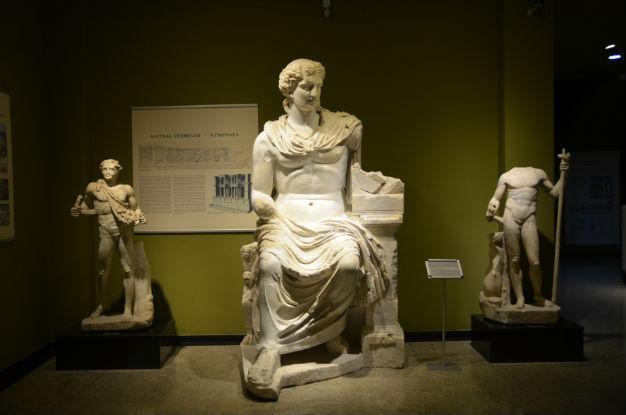Sagalassos artifacts enchant visitors
BURDUR – Anadolu Agency

AA photo
Artifacts unearthed during excavations at the ancient city of Sagalassos in the southern province of Burdur’s Ağlasun district and put on display at the Burdur Archaeology Museum draw thousands of visitors every year.
According to written sources, the history of Sagalassos dates back to 333 with the conquest of Alexander the Great, and the city had been one of the five most important ceramic production centers in the Roman era. Excavations in the city were initiated in 1989 by Belgian Professor Marc Waelkens.
After Waelkens retired two years ago, he was replaced by his deputy head of the excavations, Professor Jeroen Poblome from Belgian Leuven Catholic University.
A team of Turks and foreigners led by Leuven University have been continuing excavations in the ancient city of Sagalassos for 26 years, with their work inspected by the Culture and Tourism Ministry. Among the artifacts unearthed were five-meter-tall sculptures of Emperor Marcus Aurelius and Emperor Hadrian.
Among the other significant artifacts unearthed in the city are friezes of a dancing girl, the goddess of victory Nike and Dyonisos, Nemesis, Asklepios and Kronis sculptures.
Among Turkey’s leading museums
Burdur Archaeology Museum Director Hacı Ali Ekinci said the museum where Sagalassos’ ancient artifacts were on display was one of Turkey’s most significant museums.
He said after the ancient city was abandoned, the artifacts there were not moved to other cities but rather protected in the ancient city, which helped them survive.
Ekinci said the Roman bath had been excavated between 2007 and 2008 and the statues of emperors Hadrian and Marcus Aurelius were discovered.
The Burdur Archaeology Museum was visited by 11,134 people last year, while the number of visitors to ancient Sagalassos was 27,058.
The ancient city was founded on the slopes of the Taurus mountain range and was the metropolis of the Roman province of Pisidia. It is seven kilometers away from the Ağlasun district. The city is on the UNESCO Tentative World Heritage List.
